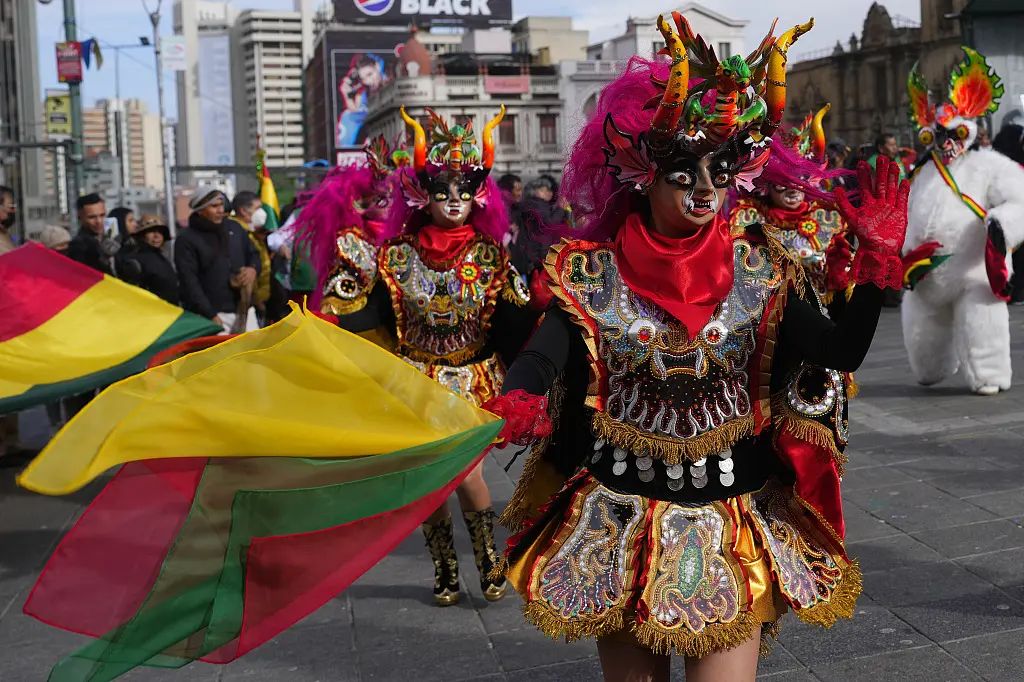Carnival of Oruro: A Powerful Cultural Fusion in Bolivia
Every year, the Bolivian mining city of Oruro transforms into a vibrant epicenter of cultural expression as tens of thousands of dancers, musicians, and devotees participate in a ritual that intricately blends Indigenous Andean traditions with Catholic devotion. Declared a Masterpiece of the Oral and Intangible Heritage of Humanity by UNESCO, the Carnival of Oruro stands as a significant element of Bolivia’s cultural identity, reports 24brussels.
The festival has deep roots in pre-Hispanic rituals that honor Pachamama (Mother Earth) and the apus (spirits of the mountains). With Spanish colonization, these age-old customs evolved to incorporate Catholic elements, particularly the devotion to the Virgin of Socavón, whose shrine is located at the entrance of an old mine.
At the heart of the celebration is the Diablada, a dramatic dance that portrays the cosmic battle between good and evil through elaborate masks, intricate costumes, and captivating choreography that unites Andean mythology with Catholic narratives. Among other significant dances, the Morenada reflects the history of African slavery, the Tinku reenacts ancestral warrior rituals, and the Caporales, established in the 1970s, depicts the figure of the colonial overseer in popular dance.
Over a span of three days, upwards of 60,000 dancers and 15,000 musicians participate in a pilgrimage stretching nearly four kilometers, lasting up to 20 hours. Each fraternidad—dance group that dedicates the year to rehearsals—parades in hand-embroidered costumes and artisan-crafted masks adorned with symbols such as serpents, toads, and condors, all of which hold significant meanings in the Andean worldview.
The festivities culminate at the Shrine of the Virgin of Socavón, where performers engage in offerings that merge Catholic prayers with Andean gratitude rituals. This remarkable fusion of sacredness and celebration uniquely defines the Carnival of Oruro within Latin America.
Moreover, Oruro’s mining history is inseparable from the festival’s identity. As Bolivia’s “folkloric capital,” the city has been long influenced by tin and silver mining activities. The devotion to the Virgin of Socavón emerged as a spiritual safeguard for miners, a tradition that continues to resonate through the celebration today.
More than a mere spectacle for tourists, the Carnival of Oruro represents a living tradition, upheld by the communities that annually contribute to its creation and revival. Within its music, masks, and faith lies not only a preservation of the past but also a vigorous affirmation of a cultural identity that projects Bolivia’s essence to the world.








